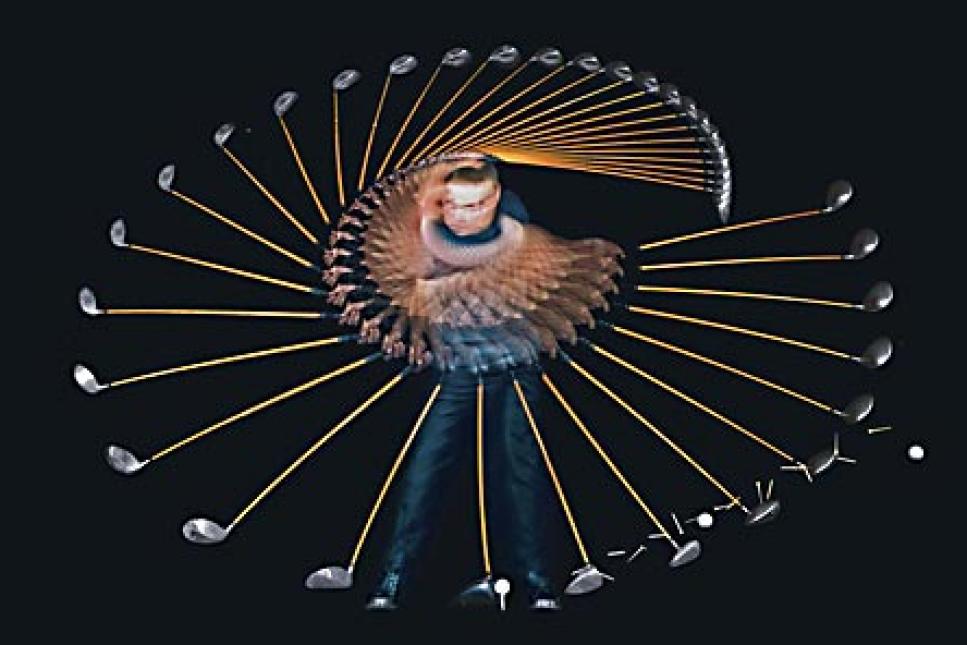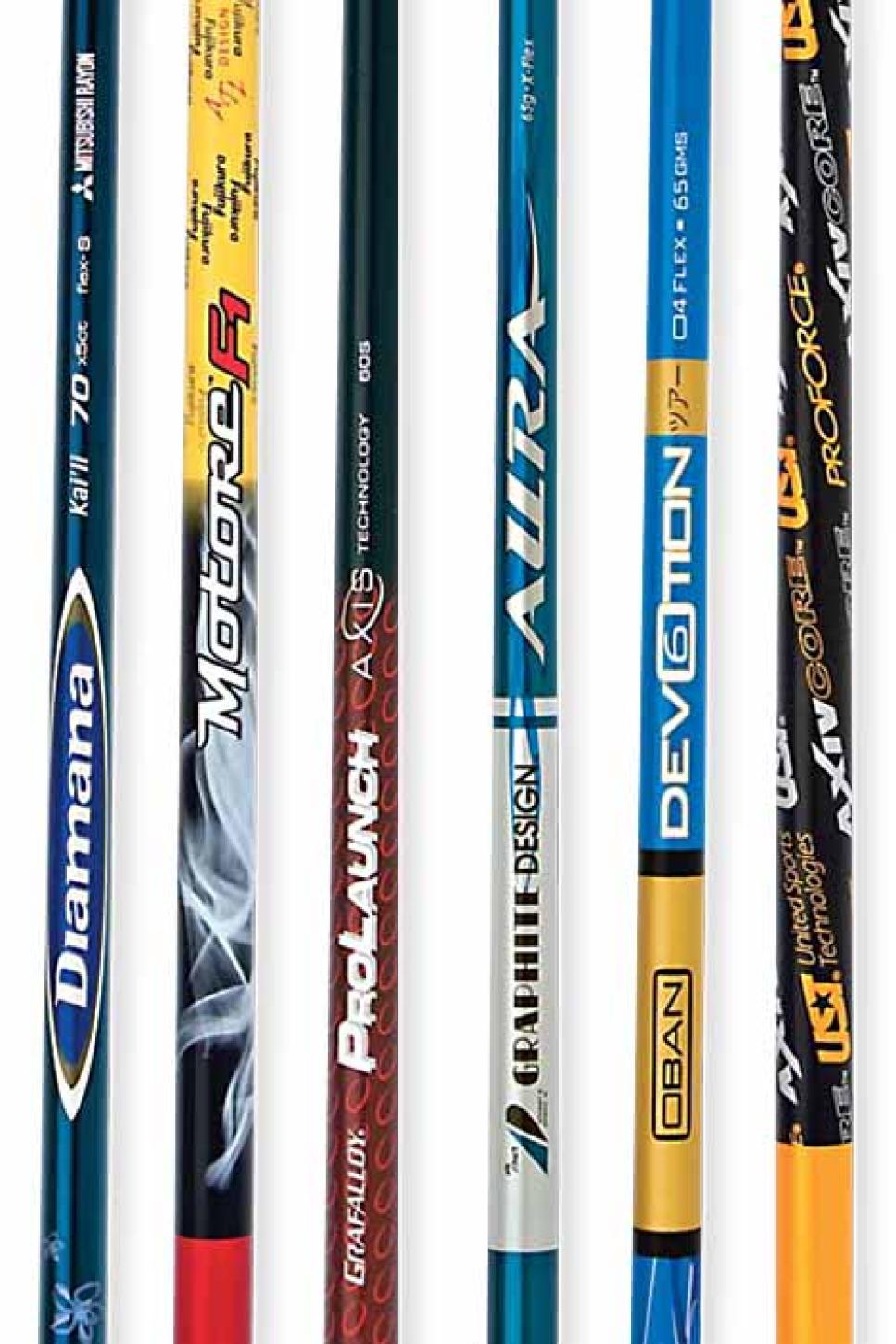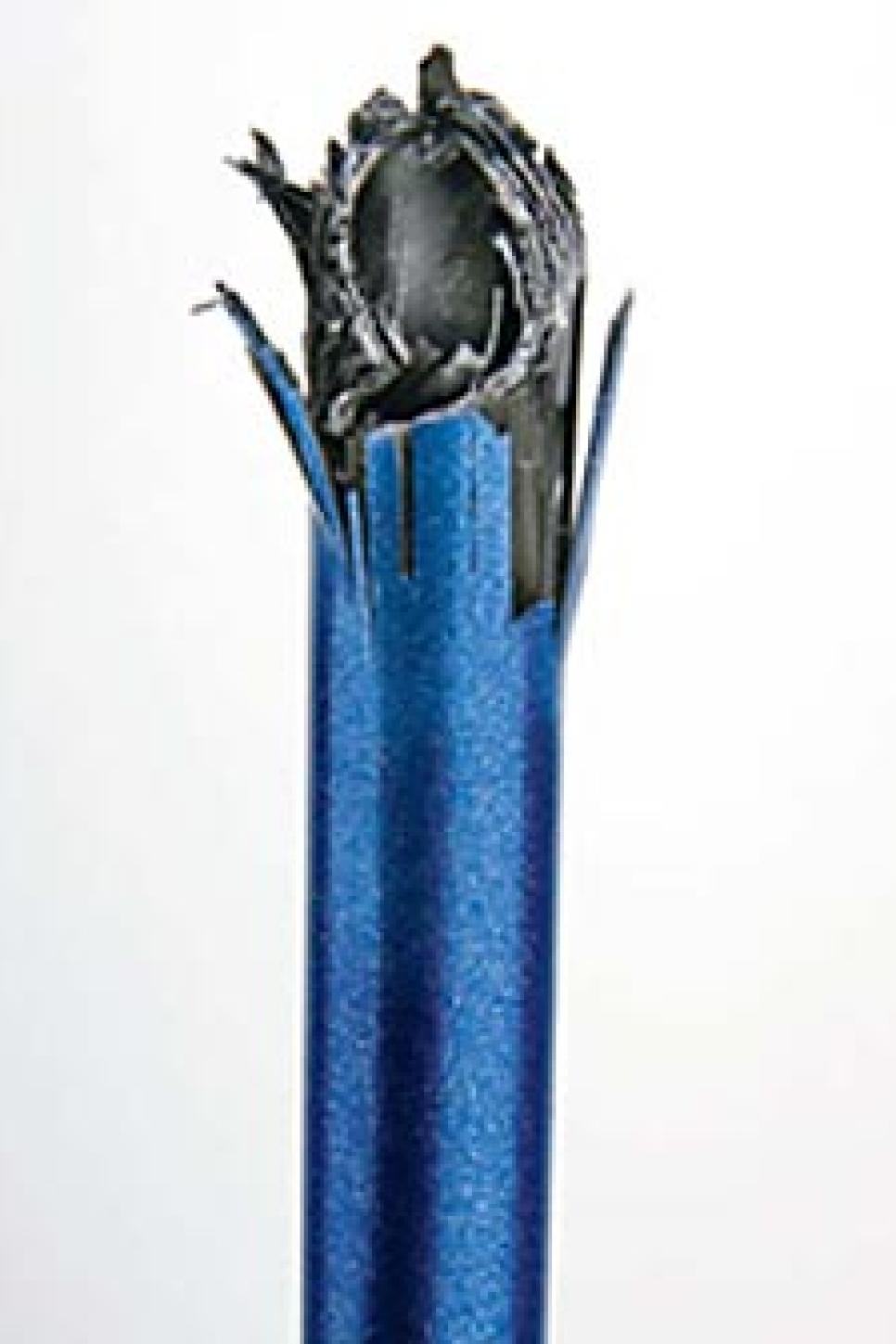Equipment
Fully Loaded

The thin plies of graphite fiber lining a driver shaft react, however subtly, to each little herk and jerk of your swing, but the only moment that matters is right before impact. Here, in a perfect world, the shaft tip is bent back from the mass of the lagging head, and then straightens the instant the ball is hit. This is how to transfer the greatest amount of energy. But look at flash photographs of tour pros, and you'll find a lot have the opposite going on at this dynamic moment. The driver head is actually leading the tip, causing the shaft to bow away from the target. For the head to lag, the swing must be constantly accelerating. Because the driver is a sweeping motion to an extreme forward ball position (unlike with irons), even the best players in the world don't typically accelerate all the way to impact.
Average golfers tend to release the club (unhinge the wrists) earlier in the downswing than the pros do. Therefore, many believe that average golfers have no need for fancy custom shafts because any energy stored in the shaft is wasted before they hit the ball.
The shaft makes a difference even if you come over the top.'
But John Oldenburg, vice president of engineering at Aldila, disagrees. "The shaft makes a difference for all golfers," he says. "Even if you come over the top and release early, the shaft is still doing something at impact. Deceleration is just negative acceleration -- it still causes the shaft to flex."
The goal is to find a shaft that -- after reacting to the sum of all forces applied to it (swing path, release point, upper-body sway, etc.) -- ideally bends and unbends on the way to impact. "If a stock shaft happens to fit the player's loading profile, he doesn't need to look any further," Oldenburg says. A shaft sold as standard (stock) is designed to flex to fit the majority of players. Custom shafts offer variety and more options to match a swing or launch conditions. In a sample of 15,000 fittings by GolfTec, a national instruction and fitting center, only 10 percent resulted in a shaft-upgrade recommendation, although some were for players worse than a 10-handicap.
So what's the difference? Ping design engineer Marty Jertson, who helped develop the company's stock TFC 129D shaft played by staff player Hunter Mahan, says regardless of the fibers, a shaft weighs a certain amount and bends a certain amount. "These mass properties drive the show," he says. "The exotic materials and production techniques of upgrade shafts might make a feel difference post-impact, damping vibration."
Shaft torque is the issue, Oldenburg says. "It's the most expensive parameter to control, especially in light shafts," he says. "Faster swingers trend toward upgrades because the low torque helps them keep the ball straight. Slower swingers, on the other hand, benefit from more torque because it helps them square the face at impact and avoid the rights."

1 DIAMANA
Available in 60-, 70- and 80-gram weights, the Kai'li is engineered to give aggressive swingers a lower spinning shot ($380, mitsubishirayongolf.com).
2 FUJIKURA
The Motore F1 employs the company's "high-inertia-tip" technology -- a flared taper in the wall thickness to increase ball speed ($250, fujikuragolf.com).
3 GRAFALLOY
The ProLaunch Axis Red features six cross-linked fiber axes and is for golfers seeking a boring trajectory ($100, grafalloy.com).
4 GRAPHITE DESIGN
The more active tip in the Tour AD Aura Blue is designed for golfers seeking a higher trajectory with additional spin ($50, gdintl.com).
5 OBAN
The lightweight Devotion 6 ranges from 64 to 66 grams and is made for players who have a quick transition at the top of their swing ($150, obanshafts.com).
6 UST MAMIYA
The four-axis weave in the ProForce AXIVCore Tour Red is designed to aid shaft recovery. The stiff-tip profile is for a firm feel ($140, ustmamiya.com).
WHAT YOU ALWAYS WONDERED

Can a shaft wear out?
Not likely. The kind of composites used to make golf shafts have outstanding fatigue properties. Some initial "micro-cracking" between the fibers and adhesive can occur the first few times a shaft is ever hit but will then level off.
What does kickpoint mean?
Absolutely nothing. A shaft doesn't "kick" forward like a whip. Think instead about "bend profile" because a shaft has different degrees of flexibility in the butt, center and the tip. Generally, the more flexible a shaft is toward the tip, the higher it will launch a ball.
Is every R-flex the same?
No. Almost all companies measure flex as how fast a shaft vibrates when one part is clamped and one part is flicked, but there is no industry standard for running this test. So any letter you see on a shaft (L, A, R, S, X) is only relative to that company. It's possible one company's R-flex might be stiffer than another brand's S-flex.